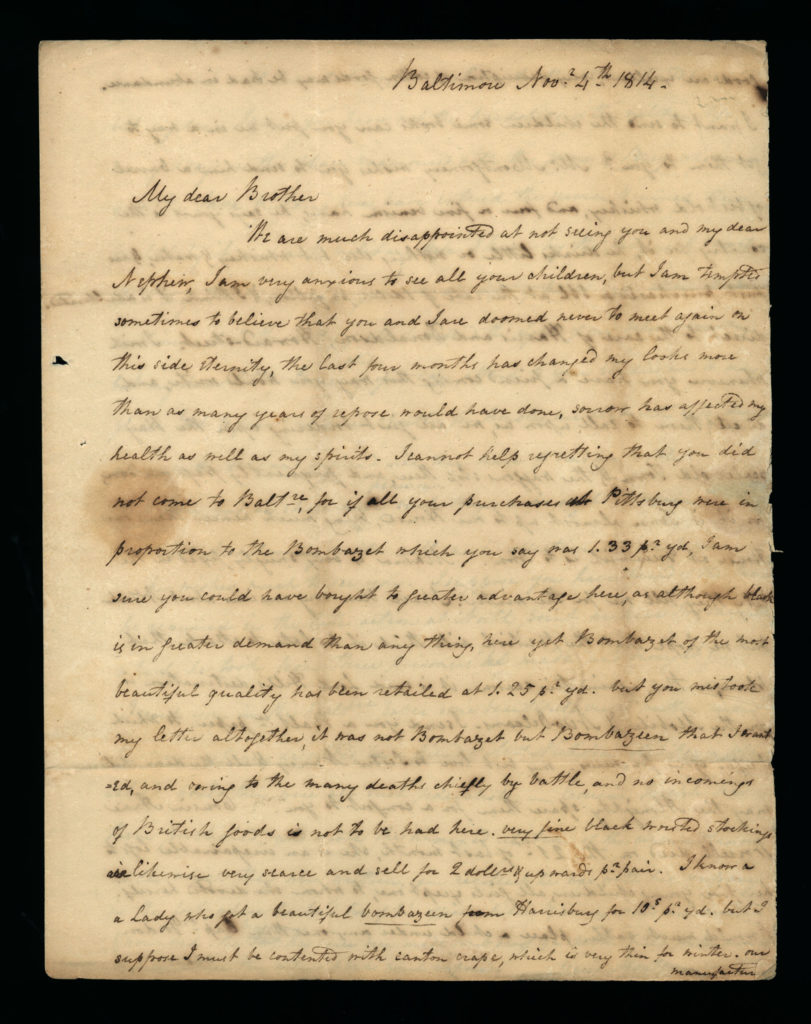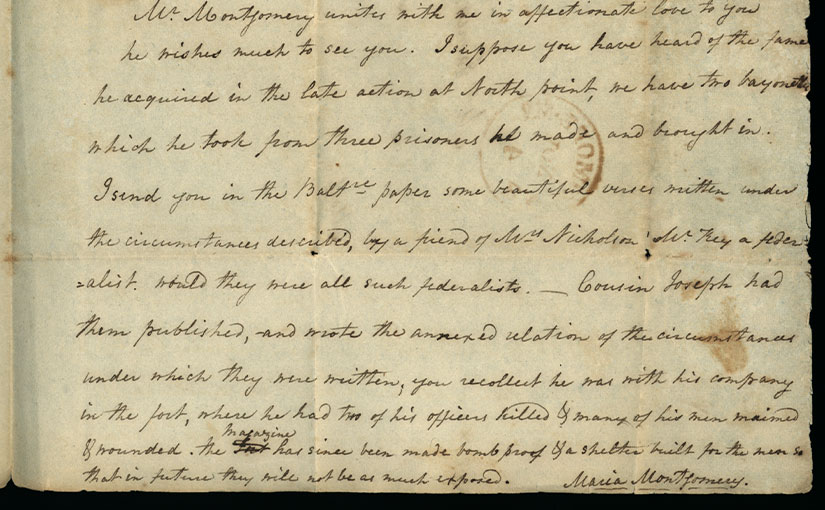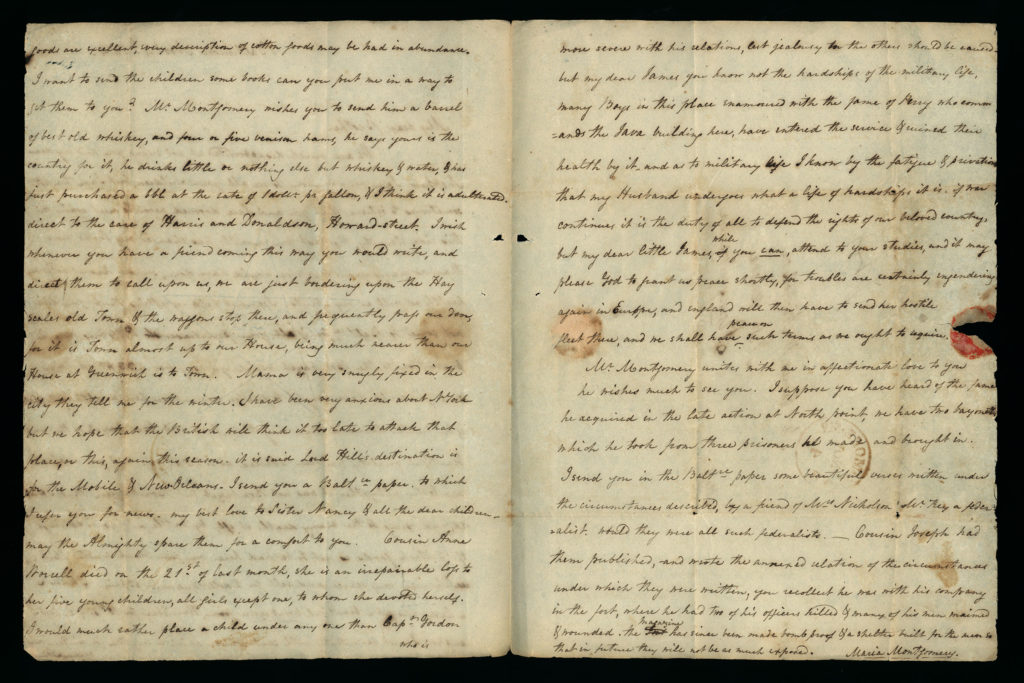by Rachel Bohlmann, American History Librarian
“Some Beautiful Verses Written under the Circumstances”
 This was how Maria Nicholson Montgomery, a Baltimore resident and wife of the city’s future mayor, described Francis Scott Key’s poem, “Defence of Fort McHenry,” in a letter to her brother in November 1814. Fort McHenry was the US garrison in Baltimore harbor and the British military’s target on September 12-14, 1814, during the War of 1812. Key had been detained on a British vessel a few miles away from the city. At dawn on the 14th, after a long night of bombardment, he spied the American flag over the fort and quickly drafted four stanzas on the American victory, set to a popular English tune, “Anacreon of Heaven.”
This was how Maria Nicholson Montgomery, a Baltimore resident and wife of the city’s future mayor, described Francis Scott Key’s poem, “Defence of Fort McHenry,” in a letter to her brother in November 1814. Fort McHenry was the US garrison in Baltimore harbor and the British military’s target on September 12-14, 1814, during the War of 1812. Key had been detained on a British vessel a few miles away from the city. At dawn on the 14th, after a long night of bombardment, he spied the American flag over the fort and quickly drafted four stanzas on the American victory, set to a popular English tune, “Anacreon of Heaven.”
Key showed the poem to his brother-in-law (and Montgomery’s cousin) Joseph Nicholson, who had commanded a company of volunteers at the fort. He was enthusiastic and helped Key publish them quickly in a broadside on September 17, 1814. By October a Baltimore music store had begun selling copies as sheet music retitled as “The Star Spangled Banner.”

Montgomery’s letter is part of the James Witter Nicholson Family Letters (MSN/EA 5002) held in Rare Books and Special Collections. The correspondence reveals the everyday details of life as well as a family’s political and social ambitions during the early republic.
Special Collections will be closed on Wednesday for the holiday but will be open regular hours (9am-5pm) the rest of the week.
We wish you and yours a safe and happy Fourth of July!
 This work is licensed under a Creative Commons Attribution 4.0 International License.
This work is licensed under a Creative Commons Attribution 4.0 International License.

